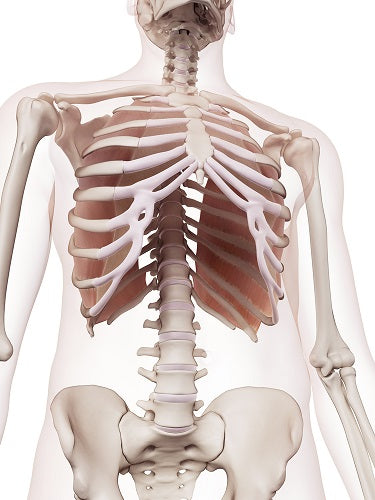
Muscle Anatomy
Internal Intercostals
The internal intercostals are located in the intercostal spaces between the ribs, forming part of the muscles associated with the thoracic cage. They are situated deep to the external intercostals and run obliquely between adjacent ribs.
Origin:
Originating from the superior border of the rib below, the internal intercostals take their starting point from the upper margin of each rib.
Insertion:
The muscles insert into the inferior border of the rib above, extending along the length of each intercostal space. This insertion site establishes a connection with the lower margin of each adjacent rib.
Function:
Functionally, the internal intercostals play a crucial role in the mechanics of breathing. During forced expiration, these muscles contract, causing the ribcage to compress. This compression decreases the thoracic volume, facilitating the expulsion of air from the lungs. The internal intercostals are particularly active during forced exhalation or during activities that require increased expiratory effort. Their contraction depresses the ribs and contributes to creating positive pressure in the thoracic cavity, assisting in the expulsion of air from the lungs. The internal intercostals are essential components of the respiratory system, contributing to the rhythmic process of breathing.
Internal Intercostals
Exercises
Most often the respiratory system, more specifically, the inspiratory and expiratory muscles, are not thought to be trainable except through aerobic type activities.
This, however, is only partially true. The respiratory system muscles can also be strengthened with specific strength training exercises.
Volume 12 - The Respiratory System of our Kinesiology of Exercise Ebooks is a first for a book on strength training for the respiratory system.
